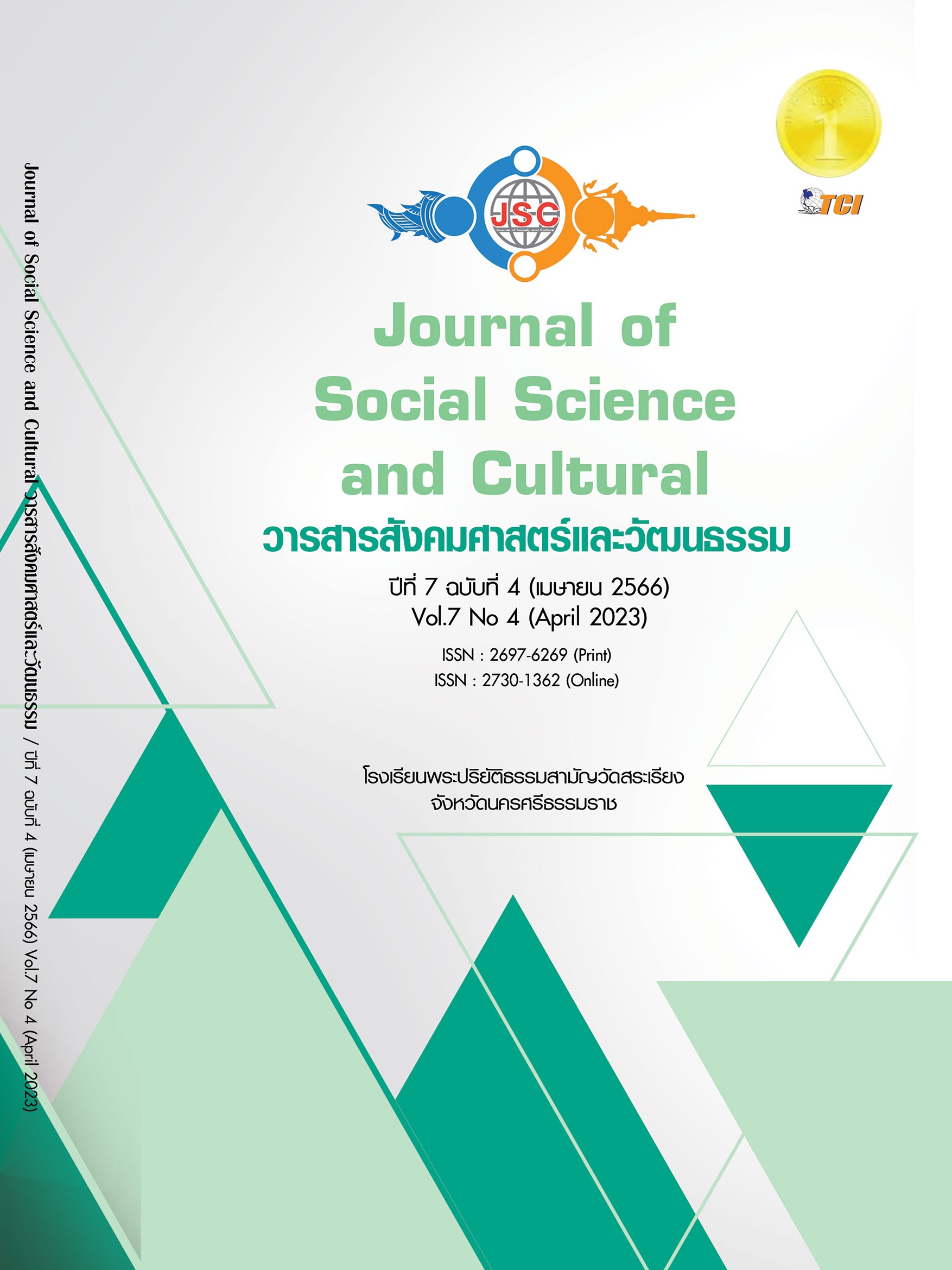การวิเคราะห์ความสามารถในการส่งออกยางพาราของผู้ประกอบการ จังหวัดสงขลา
Main Article Content
บทคัดย่อ
บทความวิจัยนี้มีวัตถุประสงค์เพื่อ 1) ศึกษาวิเคราะห์ความสามารถในการส่งออกยางพาราโดยโมเดลเพชรของผู้ประกอบการจังหวัดสงขลา 2) วิเคราะห์จุดแข็ง จุดอ่อน โอกาส และอุปสรรคในการส่งออกของยางพาราเป็นการวิจัยเชิงคุณภาพ โดยใช้วิธีการสัมภาษณ์แบบเจาะลึก (In-depth Interview) โดยการสัมภาษณ์กลุ่มผู้ให้ข้อมูลหลัก คือ เจ้าของธุรกิจ โรงงานละ 1 ราย รวม 11 ราย ผู้จัดการฝ่ายส่งออก โรงงานละ 1 ราย รวม 11 ราย ผู้จัดการฝ่ายการตลาด โรงงานละ 1 ราย รวม 11 ราย รวมทั้งสิน 33 ราย สถาบันการวิจัยเพื่อพัฒนา 2 ราย ใช้เครื่องมือการวิเคราะห์แบบจำลองเพชร (Diamond Model), SWOT Analysis พบว่า 1) ความสามารถในการส่งออกยางพาราผู้ประกอบการมีต้นทุนด้านแรงงานต่ำ 2) สถานการณ์ยางพารามีความต้องการสูง เป็นผลสืบเนื่องจากสถานการณ์โรคระบาด 3) ประเทศคู่ค้าต้องการสินค้าที่ทำจากยางพาราสูง เป็นโอกาสในการส่งออกยางพาราและมีความร่วมมือจัดตั้งสมาคมน้ำยางข้นไทยเพื่อผลักดันการส่งออกให้มีความเข้มแข็งในอุตสาหกรรมเดียวกัน 4) กลยุทธ์ที่สำคัญคือเข้าตลาดได้ก่อนถือว่าได้เปรียบ ต้องมีความซื่อสัตย์กับคู่ค้า ทำการส่งมอบสินค้าตรงเวลา 5) รัฐบาลควรสนับสนุนการสร้างมูลค่าเพิ่มสูงขึ้น 6) เหตุสุดวิสัยการเกิดโรคระบาดส่งผลกระทบโดยตรงต่อผู้ประกอบการส่งออก จุดแข็งแรงงานต่างด้าวจำนวนมากทำให้ต้นทุนแรงงานต่ำ จุดอ่อนแข่งขันกับกลุ่มอาเซียนสูง โอกาสหน่วยงานทางการแพทย์ต้องการผลิตภัณฑ์ถุงมือและอุปกรณ์อื่น ๆ อุปสรรคโรคระบาด เศรษฐกิจโลกชะลอตัว ผู้ประกอบการส่งออกรับผลกระทบจากผู้ประกอบการจีนเข้ามาติดต่อรับซื้อยางพาราจากกลุ่มเกษตรกรหรือพ่อค้าคนกลางโดยตรงเป็นการตัดวงจรการส่งออกสำคัญที่ภาครัฐต้องเข้มงวดในการเข้าบังคับควบคุม
Article Details
เอกสารอ้างอิง
กรมส่งเสริมการส่งออก. (2561). ยุทธศาสตร์รับมือการเปิด เสรีทางการค้า. เรียกใช้เมื่อ 8 ตุลาคม 2561 จาก http://www.depthai.go.th
การค้าไทย. (2561). รายชื่อผู้ส่งออกนำเข้า. เรียกใช้เมื่อ 29 มิถุนายน 2561 จาก https://tradereport. moc.go.th/TradeThai.aspx.
ชญาณินทร์ อักษรสิทธิ์. (2552). การวิเคราะห์เชิงกลยุทธ์การผลิตและการส่งออกยางพาราของไทย. ใน วิทยานิพนธ์ปริญญามหาบัณฑิต. มหาวิทยาลัยรามคำแหง.
ปาริฉัตร เต็งสุวรรณและคณะ. (2565). ความสามารถในการแข่งขันของอุตสาหกรรมยางพาราไทยในตลาดสาธารณรัฐประชาชนจีน. วารสารนักบริหาร, 42(1),79-93.
ศิริขวัญ ศรีทองกุล. (2559). การวิเคราะห์ความสามารถการส่งออกยางพาราของไทยโดยใช้ทฎษฎีดัชนีความได้เปรียบโดยเปรียบเทียบที่ปรากฏและแบบจำลองเพชร. ใน วิทยานิพนธ์บริหารธุรกิจมหาบัณฑิต. มหาวิทยาลัยสงขลานครินทร์.
สำนักงานพาณิชย์จังหวัดสงขลา. (2562). รายงานสรุปภาวะการค้าชายแดนไทย-มาเลเซียและการค้า ระหว่างประเทศ. เรียกใช้เมื่อ 22 พฤษภาคม 2561 จาก https:// mocsongkhla.appthai.com/
สำนักงานสถิติจังหวัดสงขลา. (2562). รายงานสถิติจังหวัดสงขลา.ศูนย์ข้อมูลสถิติจังหวัด. เรียกใช้เมื่อ 3 เมษายน 2563 จาก http://service.nso.go.th/nso/web/ contact/contact04.html
สำนักวิจัยเศรษฐกิจการเกษตร. (2561). ภาวะเศรษฐกิจการเกษตร. เรียกใช้เมื่อ 21 ตุลาคม 2561 จาก https://www.oae.go.th/view/1/
Department of International Economic Affairs. (2019). Including interesting economic articles. Bangkok: Business Information Center, Ministry of Foreign Affairs.
Kittisak Romket. (2013). The analysis of export performance for rubber industry in Thailand. Retrieved October 21 , 2018, from https://tdc.thailis.or.th/tdc/ dccheck.php?Int_code=92&RecId=45968&obj_id=602749
Porter, M. E. (1998 ). The competitive advantage of nation. New York: Free Press.
Porter, M. E. (1998). The Adam smith address: Location, cluster, and the new microeconomics of competition. Business Economics, 3(1), 1-17.
Surapan Junsuwan. (2014). Development Approach of Sadoa border. Retrieved October 21, 2018, from http://ird.skru.ac.th/RMS/file/9288.pdf


